I was looking at the yellow mustard fields as we drove on the almost deserted roads through the fields. My eyes had been searching for another temple after our visit to Mitawali. And then I chanced upon it from a distance standing amidst yellow mustard field. From the first look, Kakanmath Temple appeared as if various stones were stacked over the other, just like we played with building blocks as kids. The huge structure against the blue sky looked imposing and fascinating. One look at the Kakanmath Temple and I was sure that this was going to be a fitting climax of our trip to Morena.

Morena had already surprised us with its archaeological sites. We were simply spellbound by the sheer magnificence of the Bateshwar Temple Complex, the intricate sculpture of Padavali and the simplicity of the Chausath Yogini Temple. Now, the partially ruined Kakanmath Temple stood in front of us like an imposing structure dominating everything that was in the surroundings. On looking at it carefully, you will wonder how this huge structure is still standing. It does look as if it was built by bricks stacked above each other in careful balance. You might also feel that a strong burst of wind might simply rattle it and the entire structure would fall crumbling down. Even I had the same thought. But then, when it did not fall all these days, why would it crumble down now. Nevertheless, we climbed up the stairs and looked at the temple in awe and surprise.
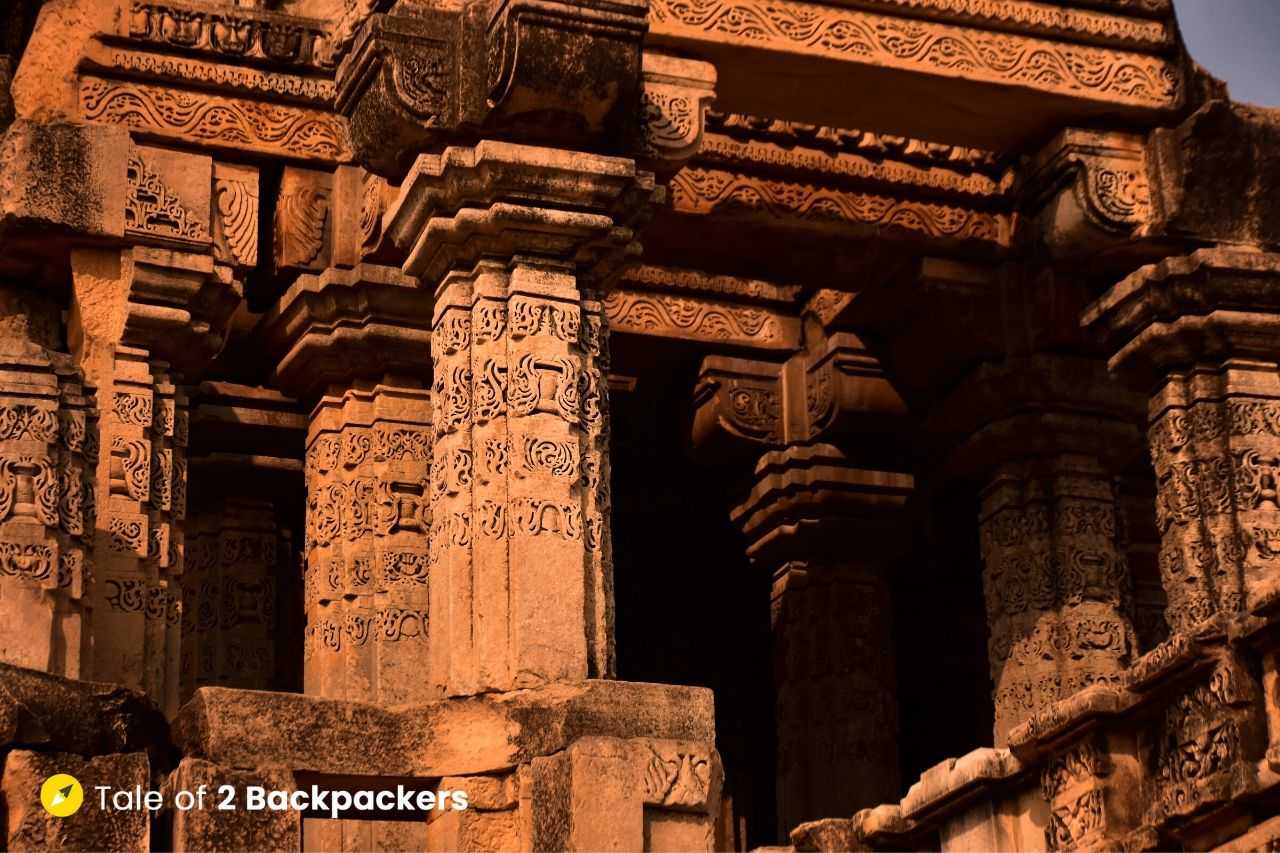
Kakanmath Temple – History
Kakanmath Temple is one of the most prominent temples dedicated to Lord Shiva and is located in Sihoniya, almost 65 km from Gwalior city. Sihoniya located in Morena district of Madhya Pradesh was known as Simhapaniya in ancient times. Records indicate that Sihoniya or Suhoniya was once the capital of the Kushawahas of the Kachchhapaghata or the Kachwaha Kingdom established around the 11th century. It is believed that Kakanmath Temple was built by a Kushawaha ruler King Kirtiraj approximately between 1015 to 1035 AD.
There is an inscription found at the Saas Bahu Temple in Gwalior that depicts a Shiva Temple being built at Simhapaniya. So it can be safely assumed that the inscription speaks of the Kakanmath Temple.
There are two theories about the name of the temple. Local legends believe that the temple was built to fulfill the wishes of Queen Kakanwati. It is believed that praying in the Kakanmath Temple fulfills all your wishes. There is also another belief that the name of the temple has been derived from Kanak (meaning gold) and matha (meaning shrine).

Kakanmath Temple – Defying Gravity
A first look at the Kakanmath Temple would reveal its structure to be similar to the Khajuraho temples. Infact many of the sculptures and carvings are similar to those found in the temples of Khajuraho. It is quite possible that this was the style and design of the temples during those time and the temples of Khajuraho were inspired by them. Infact, the guide at Padawali had told us that the temple of Padawali was the predecessors of the Khajuraho temples.

The Kakanmath Temple stands at a height of 115 feet having a pyramid-like structure. The Mandapa has 2 stories. One look at it and you can discern that it was once highly decorated. Even in ruins, the temple is a grand structure to behold. The temple stands on an ornate pitha (a raised platform) and is a part of a temple complex consisting of the main temple surrounded by four subsidiary shrines. A pillared corridor leads to the central shrine that houses a Shiva linga.

Kakanmath Temple looks like a magnificent structure from a distance. But as you go near, you can see the exquisite carvings on the walls of the temple. Beautiful statues are carved on the exterior walls, ornate carvings are found on the pillars. The Sikhara (tower) is almost 30 m high. Kakanmath Temple is full of beautiful sculptures of rich variety. We kept looking at the sculptures and carvings in awe.

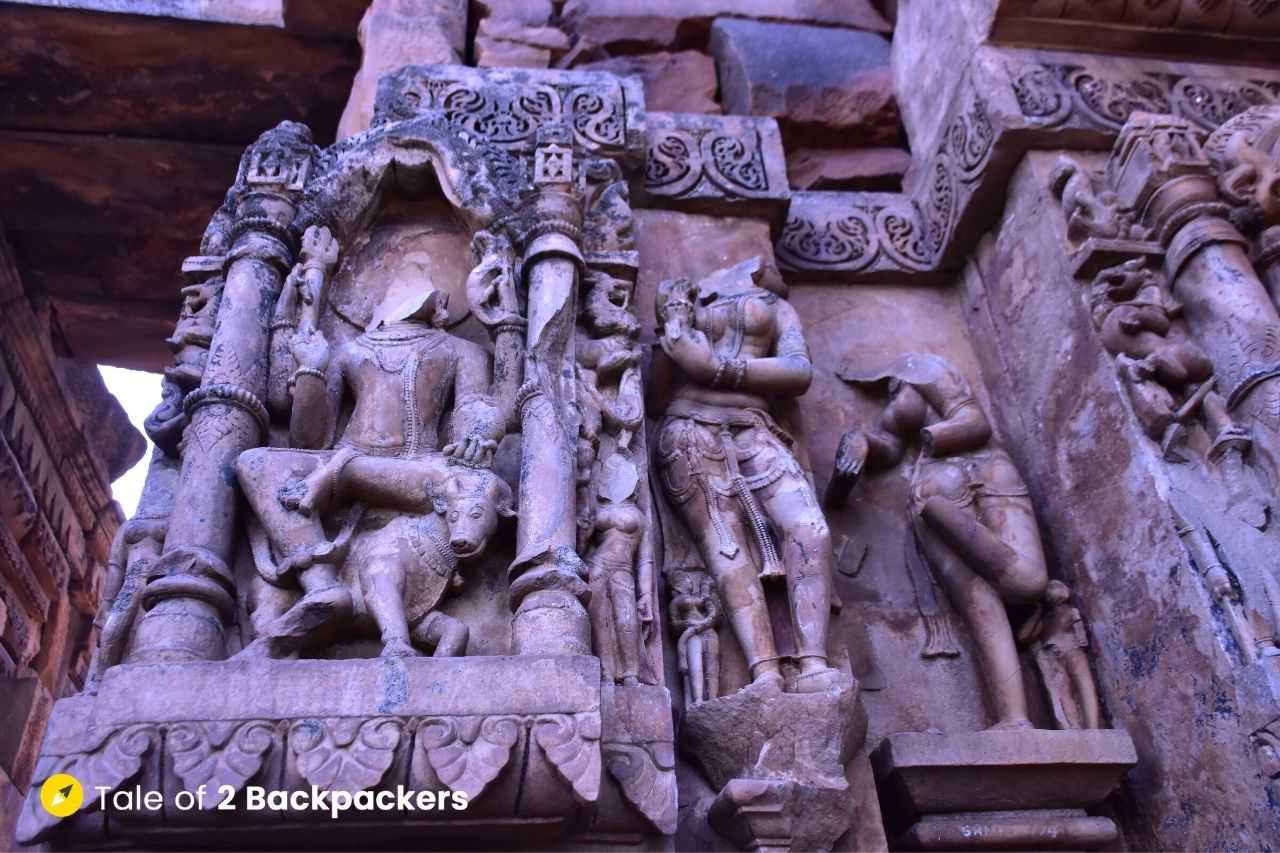

It seems as if some expert sculptor has very lovingly created his masterpiece on the walls, ceilings, pillars of the Kakanmath Temple.
What surprised me most was how the temple still managed to stand. Most of the walls of the temple have fallen and Kakanmath now looks like a bare skeleton of a temple. You could see how the stones were stacked one above the other giving a very wobbly look to the temple.
Well, did you know that the construction of the temple does not use any concrete and binding agent? The temple does not make use of lime in the construction. The stones are placed one above the other in strategic positions and the entire temple stood and is still standing depending on that.
I can still understand that in the past with all the walls and structures intact, the temple stood imposingly in the area. But it surprised me to think that it is still standing in the same way even when most of the structures are in ruins. I can only the ingenuity of the architect who planned the temple and the skill of the workers who laid the stones one by one to build this ornate and beautiful temple. Do you think any modern architect can plan such a temple?

However, the time has taken its toll on the temple. In most probability, earthquakes and invasions are the results of the ruins. The area surrounding the temple is full of sculpted stones and other masonry items from the temple and its subsidiary shrines. The Sikhara of the temple is now shorn of its ornamental stones. Only the upper storey of the central part of the Mandapa crowned by a bell member has survived.
The temple does look that it is going to fall anytime. Maybe, it is time for our archaeologists to take a look at Kakanmath Temple as well. Kakanmath Temple is now under the supervision of the Archaeological Survey of India (ASI), Gwalior.
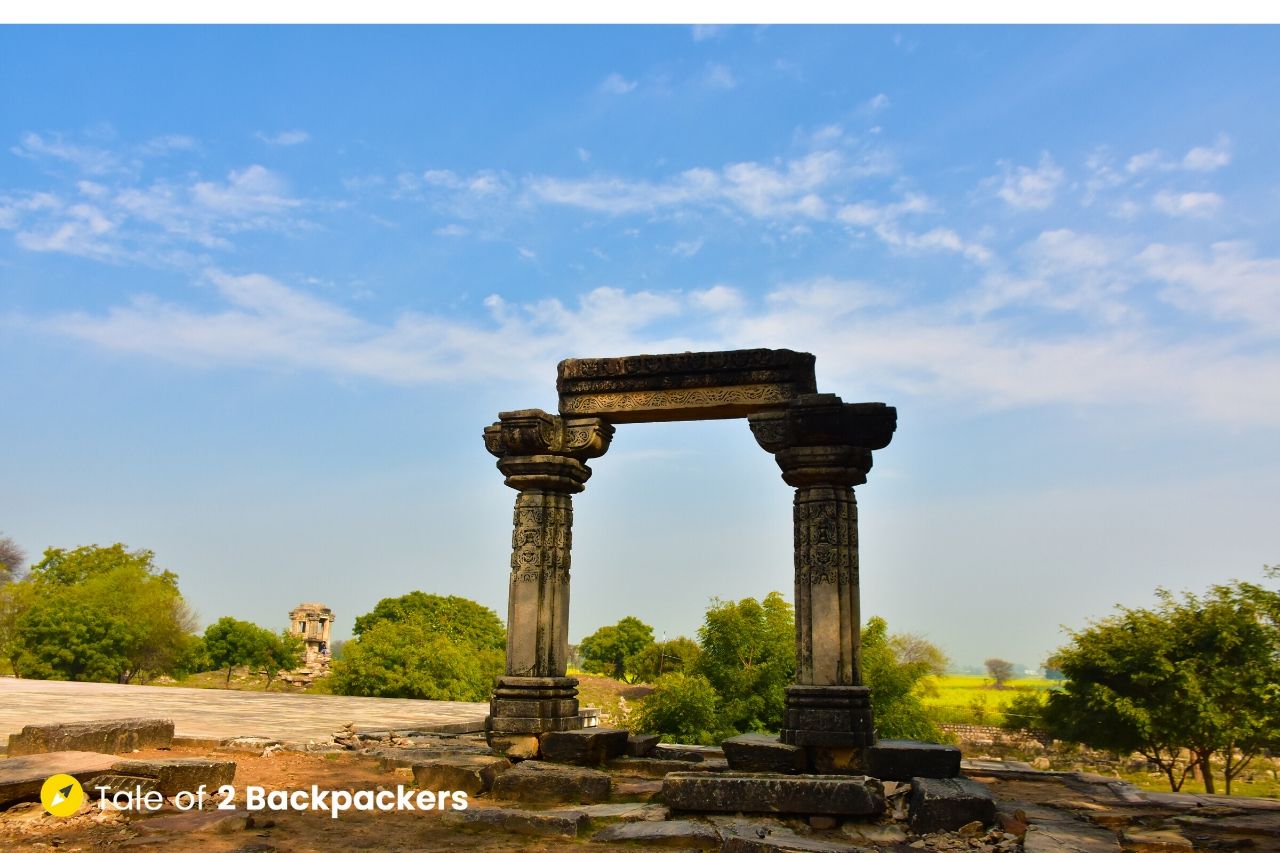

There is a gate-like structure in front of the temple as you climb up the stairs on the raised platform. But surprisingly, the orientation of the gate is parallel to the temple. Usually, such gates are placed perpendicular to the temple so that you can see the temple entrance as you enter. Maybe, it was once like that. The gate might have fallen down and later erected in such a manner. I kept speculating about this as I roamed around the temple complex. There is a small broken temple near the main temple complex. There are perhaps more like this waiting to be excavated.

The ruins of Kakanmath Temple are so magnificent and awe-inspiring. Perhaps the lost outer wall and its tumble-down conditions make it look more majestic. Well, this is just my thoughts. You visit the Kakanmath Temple and let us know what you think about it.
The site is still being excavated and various broken parts of the temple are lying around. I heard that restoration work has been undertaken by ASI for some time. The temple has been standing imposingly since the last 1000 years and I hope that the temple stands in the same majestic way for the next 1000 years also.

How to reach Kakanmath Temple?
There are two ways to reach Kakanmath Temple from Gwalior. There is one route via Morena, and another one is by Malanpur. The distance between Gwalior to Kakanmath Temple via Morena is about 70 km.

The nearest railway station is Morena and the majority of the trains stop at Morena. From Morena and Gwalior, buses ply to Sihoniya village. You can take any of these buses to reach the village. Kakanmath is situated at a little distance from the main road and it is difficult to get local transport in these areas.
We had explored the archaeological sites in Morena and Kakanmath on the same day. We had hired a car from Gwalior and did the entire trip on a day. We started from Gwalior in the morning, stopped at the Bateshwar Temple complex first, followed by Padawali and Mitaoli. Kakanmath was our last stop for the day.
We had heard that there are a few more spots and archaeological attractions in this area. But we could not explore because of lack of time. But we would definitely come back to this area and explore it later.


Best Time to Visit
Madhya Pradesh has an extreme climate. The summers will be really hot. So the best time to visit these areas is undoubtedly the winter season. You can also visit during the monsoon.
Places to Stay
I don’t think there are any places to stay at Sihoniya village. The best option would be to stay at Gwalior and do a day trip to Morena and Sihoniya together. You can also stay at Morena town.
A Few more pictures of Kakanmath Temple, Morena









So that was all about Kakanmath Temple, a place that had completely awed us. If you visit Kakanmath Temple in Sihoniya early in the morning, you will see peacocks in the area. Did you like the post? Please share your feedback with us by commenting below. If you want any information about the place, comment below or send us a mail at info@taleof2backpackers.com
Pin the post for a later read!
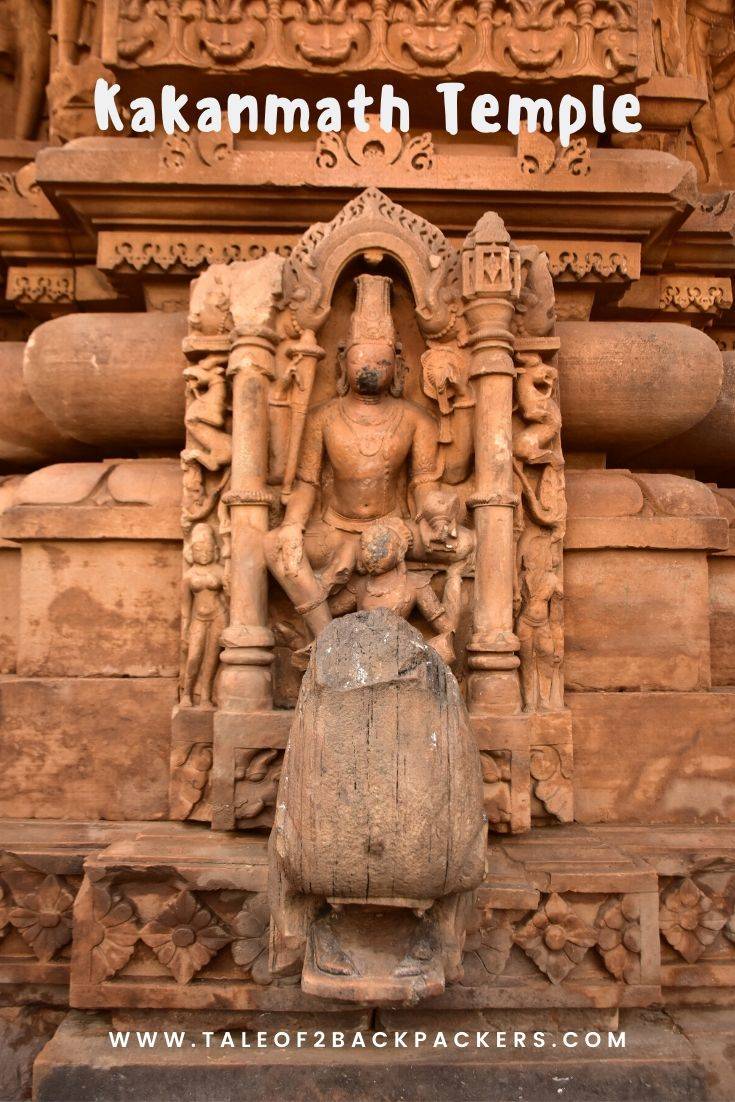



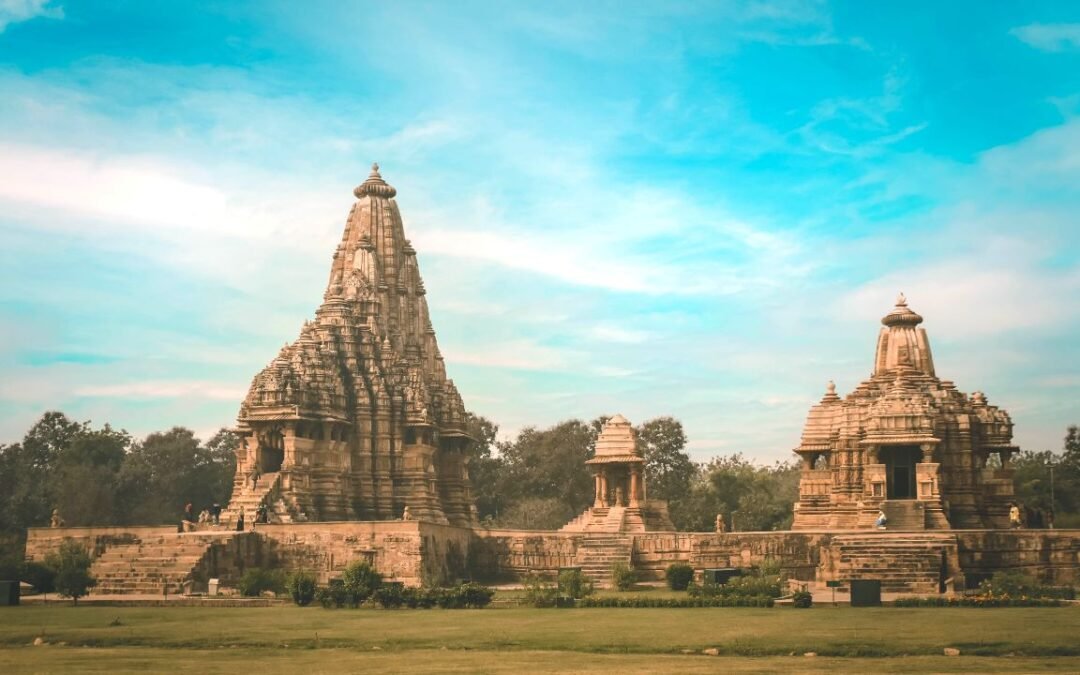




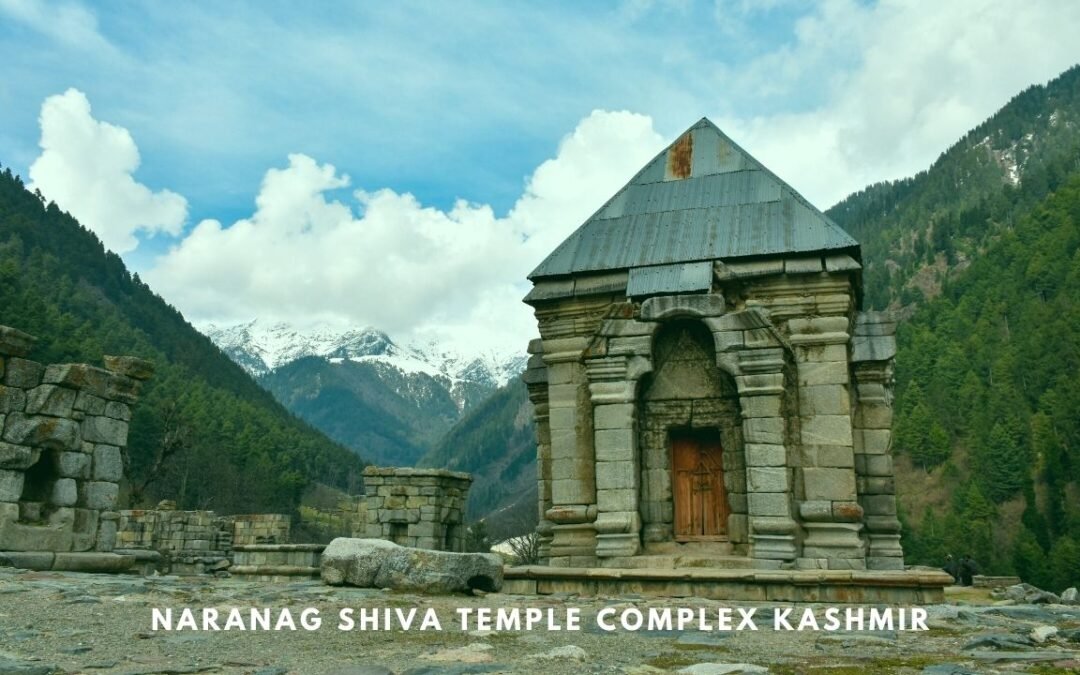

Kakanmath temple is surely looks similar to Khajuraho and part of it looks similar to architecture of Modhera sun temple like carvings,gate etc.It looks quite an engineering marvel as how workers have had put stones one upon other and that too without concrete!! India has so many such marvels that makes us in awe. I haven;t heard about this temple before, but I will definitely bookmarking your post for my next trip to MP.
Thank you Mayuri! We also had not heard about this temple before we landed there. Seriously, we were so pleasantly surprised to see the temple.
Lovely and amazing place . You would accept that Morena could not make its place in travel map as it required.
I totally agree. Morena is really a hidden gem of not only MP, but also of India. I was surprised to see such beautiful archaeological stuffs there.
I have heard quite a lot about Morena but this is the first time I am knowing about Kakanmath Temple. What an awe inspiring structure. I makes me wonder about what lovely creations we have inherited in our country and the absolutely stunning architecture of the temple goes to prove that. Surely a place I would love to visit. The green fields with the yellow mustard flowers and on an empty road is so inviting. I am sure you had a great trip which I too would like to replicate sometime.
Thank you Subhashish! We too came to know about Kakanmath after visiting Morena! Its a lovely place.
The exteriors of the temples looks amazing.It is unbelievable how the
stones on the temple are still intact until now even though they did not use any binding agent. The sculpture and the carvings are breathtaking. Definitely a must visit place!
Thank you!
hi
interesting post indeed, I gather the shiva lingam is no more there, did you try to find out what happened to that? I was expecting to see a shrine of Kal Bhairava also but maybe that is not been excavated or must have been destroyed. It is always lovely to visit ruins such as this for they offer insight and a sense of question mark as to what History has in store for us. Maybe someday I get a chance to visit Kakanath Temple, great post and visuals once again
The Shiva Lingam was inside the temple itself, and there was one lying near the field. There must have been so many other interesting things there. I heard a few of the sculptures had been taken to Gwalior.
The design and the detailing in these buildings is impressive, and you could spend hours just trying to capture the best bits. But what I really love is the color of the stone, and how it changes based on the type of light that’s hitting it. It really warms up as the light becomes softer towards the beginning of end of the day.
Thank you, Jay!
Pieces of architecture like the Kakanmath Temple always amaze me. Like you said, it is incredible that so many of these structures are still standing despite having withstood the elements for centuries. It is a testimony to the level of craftsmanship that went into these structures. I had not heard of this temple before so thanks for sharing a bit of history.
Thank you!
There is so much uncharted history in India! There should be books and stories about these wonders.
I love the Pyramid- like design of Kakanmath Temple. The statues carved on its exterior walls is the most beautiful and intact statues I have seen on buildings built in the 11th century.
It definitely reflects the majesty it must have exuded before.
Thank you!
A total gem this is . Every inch of it has a story. It does look like a building block or a lego structure. However, the open to sky scenario makes me wonder if there was a ceiling that might have fallen down. Most of these temples with such workmanship typically have an intricate ceiling. Very well documented.
Thank you Ami. Yes, Kakanmath was totally a gem. There might have been a ceiling, even I thought so. But we could not verify it with anyone.
The architecture of Kakanmath temple is so impressive! I love the sculptures and carvings there. It’s interesting to know that the construction of the temple didn’t involve lime, just by placing stones one above the other. I’ll remember to avoid summer and visit this place in the winter instead.
Thank you!
Now, staying is also available in Sihonia(less . Additional to this there is a Jain(religion) festival in Sep month, where they worship God and give Saffron+milk shower. Good to see.
I will provide Inn contact, so far very less possibility for night stay.
Thank you for the information. We would like to visit there again for the Jain festival! Do let me know how to contact you.
loved this piece, thanks so much.
Thank you so much!
Very very nice pictures. Wanted to share some pics on my site esamskriti with due credits. sent u a mail on info id, look forward to hearing from you. thks.
Thank you Sanjeev. I think we have discussed this over mail.